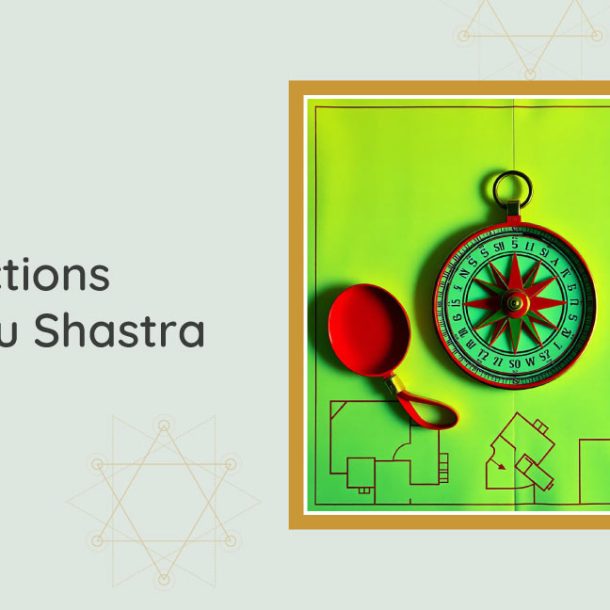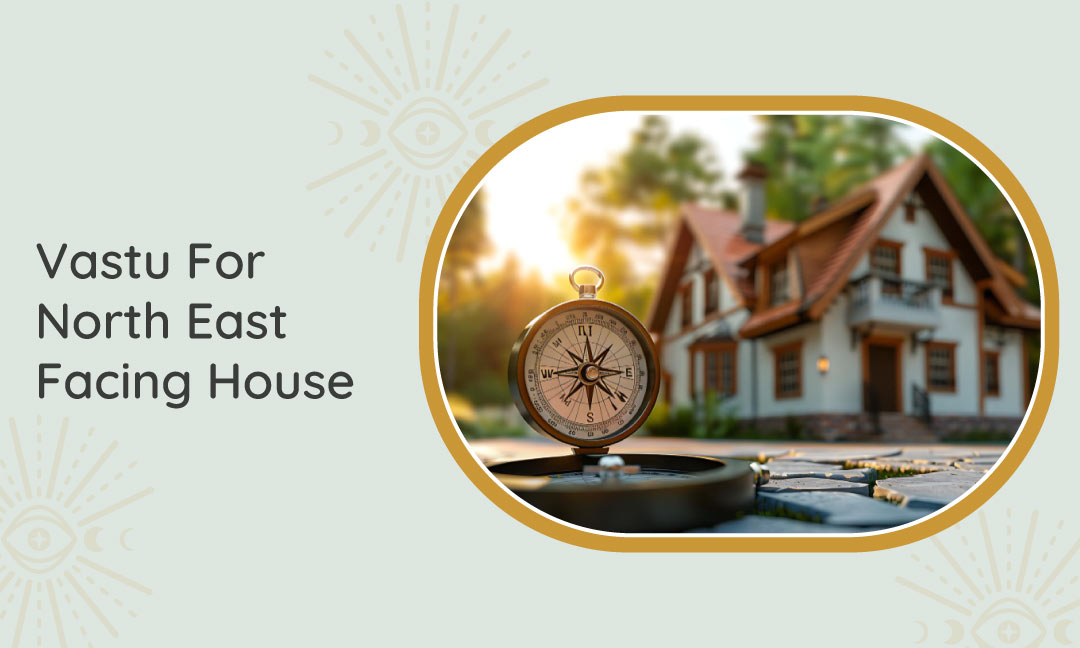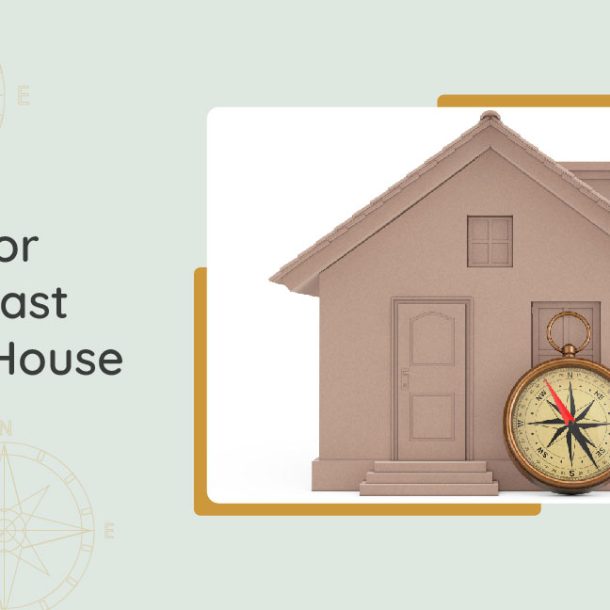
 If your house faces the northeast, you’ve already made a wise choice according to Vastu Shastra. This direction is believed to bring peace, clarity, and spiritual energy into your home. But just facing the “right” way isn’t enough; the way your space is designed matters just as much. Whether you’re planning a new build or trying to fix an existing layout, a few thoughtful decisions can make a big difference in how your home feels. Read this blog to know how.
If your house faces the northeast, you’ve already made a wise choice according to Vastu Shastra. This direction is believed to bring peace, clarity, and spiritual energy into your home. But just facing the “right” way isn’t enough; the way your space is designed matters just as much. Whether you’re planning a new build or trying to fix an existing layout, a few thoughtful decisions can make a big difference in how your home feels. Read this blog to know how.
Do you Want to Make Your Northeast-Facing Home Truly Vastu-Compliant?
Experience the expert tips and personalized corrections to bring balance, prosperity, and positive energy into your living space.
BOOK A VASTU CONSULTATION NOW
A] Why North-East Is Considered Auspicious in Vastu
In Vastu Shastra, the north-east corner, often called Ishan Kona, is seen as a very sacred space. It’s connected with the water element, which symbolises flow, purity, and peace. This corner is also said to hold divine energy. That’s why it’s treated with special care in Vastu planning. One of the main benefits of having a northeast-facing house is how it supports mental clarity and spiritual growth. Homes that are open and clean in this zone tend to feel lighter and more peaceful. It’s also the corner where early morning sunlight enters the home, bringing in calm energy that lifts your mood and sets the tone for the day. If this part of the house is designed well, it’s known to support clear thinking, better decision-making, and even improved finances. A northeast-facing house can work in your favour, but only if the flow of energy in this direction is not blocked.B] What Are the Key Vastu Guidelines for a North-East Facing Home?
a. Main Door Placement
To get the benefits of a northeast-facing house, the entrance is very important. Ideally, the main door should sit within the northeast quadrant, either leaning a little towards the north or east. This allows good energy to flow into the home freely. Avoid placing toilets, dustbins, or any kind of clutter near the door. It’s also best not to hang anything heavy or dark above it. If you have a house main door facing northeast and this area is kept clean and light, it helps the home feel more welcoming and balanced.b. Room-Wise Placement Suggestions
- Kitchen: The kitchen should go in the south-east. This is the fire zone, and fire and water don’t mix well. If your kitchen is already in the northeast, try using copper items, earth-tone decor, or a bowl of sea salt to reduce the imbalance.
- Master Bedroom: The best location is the south-west. This area gives a sense of stability and calm. If it’s not possible, use heavy furniture in the south-west part of the room to anchor the space.
- Living Room: Place this in the north or east zone. These areas stay naturally bright and airy, which is perfect for a space where everyone gathers.
- Pooja Room: The ideal place is right in the northeast itself. Since this corner is already considered divine, it’s the best spot for spiritual practices or meditation.
- Toilets/Bathrooms: These are best placed in the west or north-west. If a toilet already exists in the northeast, consider remedies like installing a Vastu pyramid, placing mirrors carefully, or using specific colour changes to correct the imbalance.
c. What to Follow and Avoid in a North-East Facing House?
Keep the northeast corner as open and clutter-free as possible. Don’t place heavy storage units, water tanks, or staircases here. This zone should feel light and free of pressure. Avoid dark or dull colours in this area. Stick with soft shades—white, light blue, or pastels work well. Also, avoid sharp corners, bulky furniture, or overgrown plants in this part of the house. The idea is to keep it peaceful and easy on the eyes.C] How Should You Plan a House on a North-East Facing Plot?
If you’re starting from scratch, here’s the house plan for a northeast-facing plot. Begin by planning a gentle slope that goes down towards the northeast. That encourages natural energy to flow in. According to Vastu, the direction for a home entrance should sit in the northeast quadrant. Place the pooja room in the same area if you can. The kitchen should go in the south-east, and the master bedroom in the south-west. Use the north and east sides of the house for the living room or dining area. Toilets and storage rooms should go in the west or north-west zones. This kind of layout supports both daily comfort and long-term balance.D] What Are Some Vastu Remedies for North-East Facing Homes?
If there’s already a flaw in your home’s layout, like a kitchen or toilet in the northeast, you can try a few simple tips of Vastu Shastra for northeast-facing houses. Vastu pyramids are often used to redirect energy. You can also use soft wall colours like white or light blue to create a calm. A bowl of sea salt placed in the corner absorbs unwanted energy. Other remedies include using copper or brass items to correct imbalances. Even small changes like this can help you regain balance without major renovations.Have you faced Vastu issues in your space?
Get an instant solution for your Vastu issues and make your space Vastu-compliant.
CALL FOR VASTU CONSULTATION
Conclusion
A northeast-facing house has the potential to bring calm, focus, and prosperity into your life, but only if the space is treated with care. Keep the energy in this corner clean and free-flowing. Don’t block it with clutter or heavy construction. The way your home is laid out makes a real difference in how it feels to live there. Follow the right Vastu tips for a northeast-facing house, keep it simple, and allow the natural energy to do its work. You can get in touch with a Vastu expert for professional guidance.Vastu Acharaya Geetanjali Bhalla
Greetings, I'm Geetanjali Bhalla your Vastu Consultant serving UK since 2008. I am passionate about blending ancient wisdom with modern living, I specialize in creating harmonious spaces tailored to your unique needs. Let's work together to infuse positivity and abundance into your surroundings using Vastu Shastra and Vedic Astrology. Need help making decisions that align with your goals? Contact us, and let's transform your space!
Address
Northwood in the Greater
London Area
London Area
Email : ask@vastu-shastra.co.uk
Call Us : +44 (0) 203 393 0444
Copyright © 2025 Vastushastra. All Rights Reserved. Made By Capsicum.


